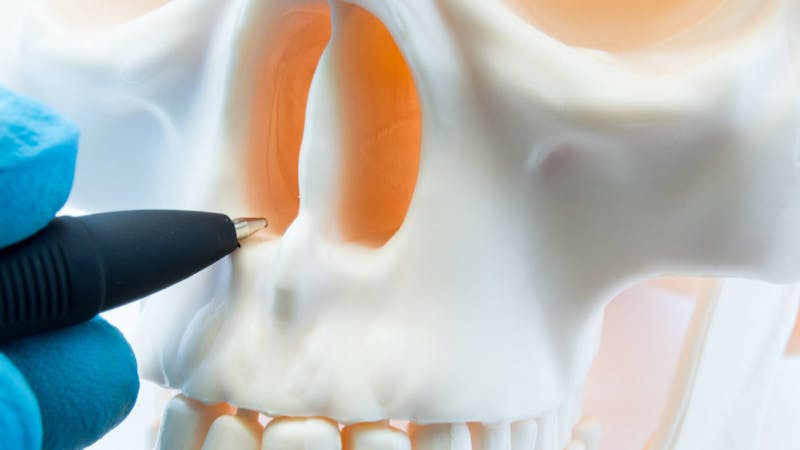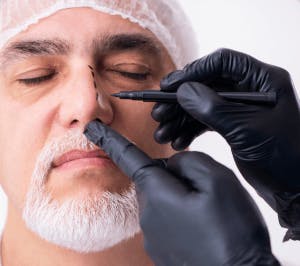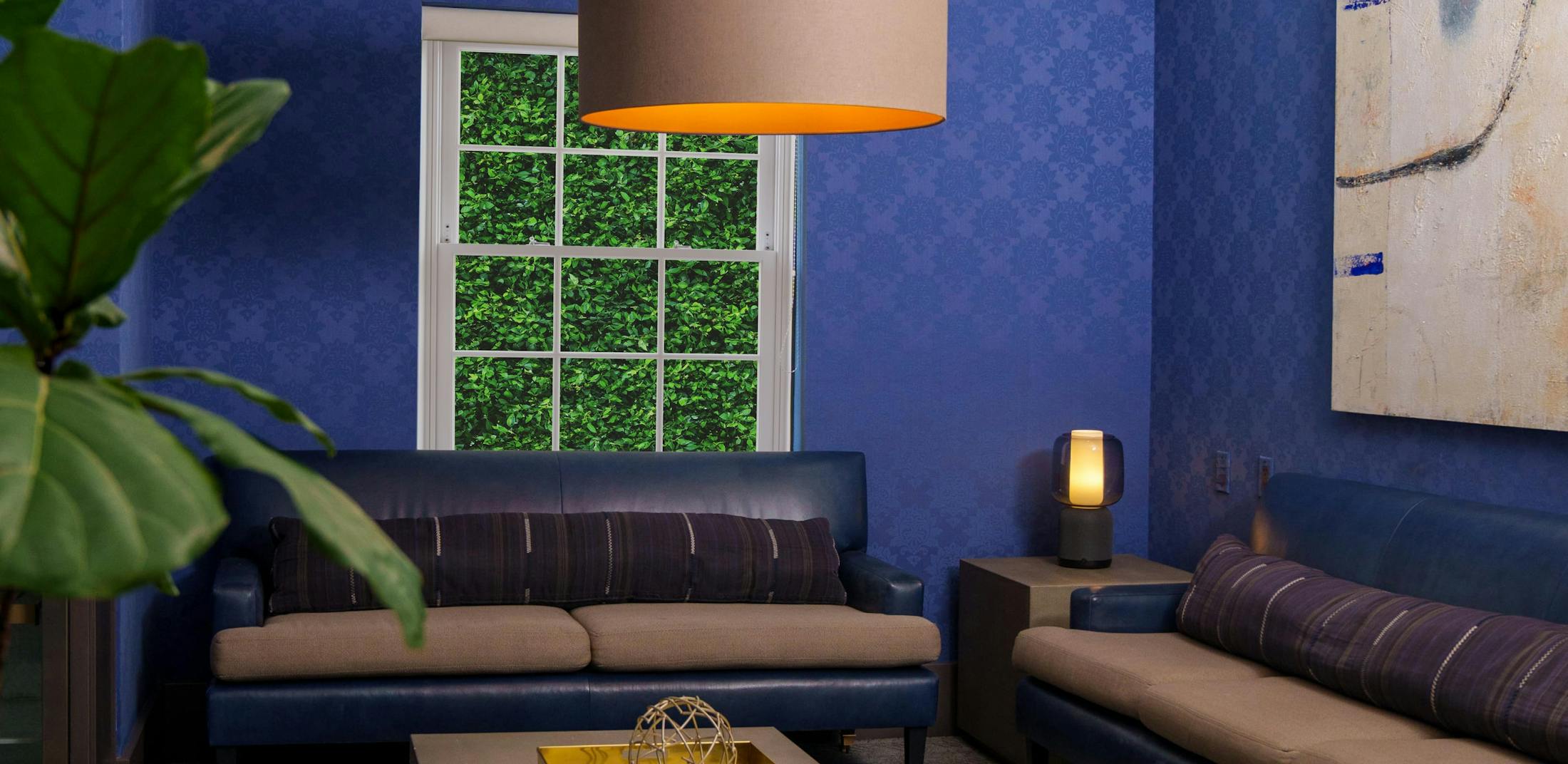
One common concern people considering rhinoplasty have is whether the procedure can correct or fix a deviated septum. This condition occurs when the cartilage dividing the two nostrils is crooked or malformed. It’s extremely rare for anyone to have a perfectly symmetrical septum.
In fact, most individuals have some slight degree of septum deviation that doesn’t cause any discomfort. However, those who experience severe nasal congestion, frequent sinus infections, or difficulty breathing should consider how rhinoplasty can improve their breathing comfort and health.
Rhinoplasty to Repair a Deviated Septum
Rhinoplasty or nose job surgery is one of the most popular cosmetic procedures in the world that also has a functional purpose. While not all rhinoplasty surgeries will include septoplasty, many of the patients undergoing rhinoplasty will have septoplasty at the same time. The access, incisions, aftercare and downtime are the same, and easily combined. The goal of the procedure is to improve the alignment of the cartilage to make it easier for patients to breathe. An added benefit is rhinoplasty also enhances the appearance of the nose.
Rhinoplasty Risks
If you have a deviated septum and are considering rhinoplasty, it’s important to talk to an experienced facial plastic surgeon to learn about the risks and benefits of the procedure. Although the surgery offers numerous benefits for patients, it’s not without the following risks.
- Infection is a rare complication of rhinoplasty, but it can occur. If an infection occurs, it is important to see your doctor right away for treatment.
- Bleeding after rhinoplasty is also rare. However, it is more likely to occur in individuals with a history of bleeding problems.
- Numbness is a common side effect of rhinoplasty. In most cases, it’s temporary, but it can last up to several months or become permanent.
- Pain is also a common side effect of rhinoplasty. Many patients find the pain and discomfort tolerable and manageable with over-the-counter pain relievers. However, prescription pain medications are available for those who experience severe pain.
- Swelling is also common with rhinoplasty. It is temporary and often resolves within a few weeks. Swelling can last longer for some patients.
- Unsatisfactory results rarely occur, but some individuals have unrealistic expectations about their rhinoplasty surgery. Fortunately, revision rhinoplasty is a solution to help patients achieve their desired outcomes.
- A perforated septum is a potential risk associated with rhinoplasty. The septum is the wall that separates the two nostrils, and it can be damaged during rhinoplasty if too much tissue is removed or the incisions are too large. A perforated septum can cause several problems, including difficulty breathing, crusting or bleeding in the nose, and a whistling sound when breathing. In some cases, it may require additional surgery to repair the perforation.
Anyone unsure about having rhinoplasty for cosmetic or functional reasons should discuss the risks of the procedure with a board-certified surgeon.
What Are the Benefits of Rhinoplasty for a Deviated Septum?
There are several benefits to rhinoplasty for a deviated septum. First, it can improve breathing. When the septum is deviated, it can block one or both nasal passages. This can make it difficult to breathe, especially through the nose. Rhinoplasty can straighten the septum and open up the nasal passages, making it easier to breathe.
Second, deviated septum correction during rhinoplasty can improve sleep. When you have difficulty breathing through your nose, you may snore or have sleep apnea. Snoring is a condition in which you make loud, repetitive noises while you sleep. Sleep apnea interrupts breathing for short periods of time when you sleep. Both snoring and sleep apnea are common causes of sleep disturbances that lead to daytime drowsiness and poor cognitive function. Having rhinoplasty to fix a deviated septum can improve breathing and reduce snoring and sleep apnea and enhance sleep hygiene.
Third, rhinoplasty improves the appearance of your nose. If you are unhappy with the appearance of your nose, or, if you experience any of the following concerns, rhinoplasty is the procedure to have.
- Difficulty breathing through the nose
- Frequent nosebleeds
- Snoring
- Sinusitis
Rhinoplasty improves the symmetry of the nose and corrects its appearance to balance out the facial features. It’s also a very effective treatment for those experiencing breathing issues, frequent nosebleeds, sinus infections, and poor sleep. If you are unhappy with the way your nose looks or if you are having difficulty breathing, rhinoplasty may be a good option for you.
The benefits of rhinoplasty outweigh the risks for many people. If you have a deviated septum that is causing you problems, it’s time for you to consider rhinoplasty to improve your breathing, appearance, and quality of life.
How to Prepare for Rhinoplasty for a Deviated Septum
If you’re considering rhinoplasty and septoplasty to fix a deviated septum, there are a few things you can do to prepare for the surgery.
- Make sure you’re in good health overall.
- Stop smoking and drinking alcohol for at least two weeks before the surgery.
- Arrange for someone to take care of you after the procedure.
After rhinoplasty, patients wear a splint on their noses. The first follow-up appointment is when the splint is removed so the surgeon can assess the progress. The average time it takes rhinoplasty patients to recover after having their septum repaired is two weeks. During this time, it’s important to avoid strenuous activities, heavy lifting, blowing the nose, wearing glasses, and using nasal strips. Recovery is complete when the surgeon provides their approval to resume normal activities. This is also when patients can see their results and breathe easier through their noses.
Rhinoplasty with septoplasty doesn’t just correct a deviated septum. It also addresses cosmetic concerns of the nose by changing the size or shape of the nose. As beneficial as many find rhinoplasty, it’s still a surgical procedure that comes with certain risks. It’s best to consult with a qualified and experienced rhinoplasty surgeon to learn the risks and benefits of the procedure.
If you’re ready to learn how rhinoplasty can fix a deviated septum and improve your life, contact Torkian Facial Plastic Surgery to schedule a consultation with Dr. Behrooz Torkian.

